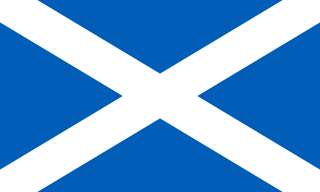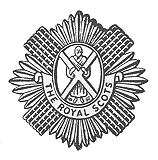
The Royal Scots , once known as the Royal Regiment of Foot, was the oldest and most senior infantry regiment of the line of the British Army, having been raised in 1633 during the reign of Charles I of Scotland. The regiment existed continuously until 2006, when it amalgamated with the King's Own Scottish Borderers to become the Royal Scots Borderers, which merged with the Royal Highland Fusiliers, the Black Watch, the Highlanders and the Argyll and Sutherland Highlanders to form the Royal Regiment of Scotland.
The 51st Highland Volunteers was a regiment and is now a battalion in the British Army's Army Reserve or reserve force in the Scottish Highlands, forming the 7th Battalion of the Royal Regiment of Scotland, also known as 7 SCOTS. In contrast with 52nd Lowland, a similar unit located in the Lowlands of Scotland, 51st Highland consists of a number of infantry companies located throughout the various regions of the Highlands. Both 51st Highland Volunteers and 52nd Lowland Volunteers were unique in that each of their companies was officially the reserve element of a regular infantry regiment in the Scottish Division.

The Scottish Division was a British Army Infantry command, training and administrative apparatus designated for all Scottish line infantry units. It merged with the Prince of Wales' Division, to form the Scottish, Welsh and Irish Division in 2017.

A Scottish regiment is any regiment that at some time in its history has or had a name that referred to Scotland or some part, thereof, and adopted items of Scottish dress. These regiments were and are usually a product of the British Empire, either directly serving the United Kingdom, serving as colonial troops, or later as part of Commonwealth country military establishments. Their "Scottishness" is no longer necessarily due to recruitment in Scotland nor any proportion of members of Scottish ancestry. Traditionally, Scottish regiments cultivate a reputation of exceptional fierceness in combat and are often given romantic portrayals in popular media. Within Scotland, itself, regiments of the Scottish Lowlands did not adopt as distinctively "Scottish" uniforms until the late Victorian Era and even then the kilt, that most distinctive aspect of the Highland soldier, was not adopted wholesale.

The Glasgow Highlanders was a former infantry regiment of the British Army, part of the Territorial Force, later renamed the Territorial Army. The regiment eventually became a Volunteer Battalion of the Highland Light Infantry in 1881. The regiment saw active service in both World War I and World War II. In 1959 the Highland Light Infantry was amalgamated with the Royal Scots Fusiliers to form the Royal Highland Fusiliers. The Glasgow Highlanders was later amalgamated into the 52nd Lowland Volunteers in 1967.
The Royal Scots Borderers, 1st Battalion, the Royal Regiment of Scotland is a Specialised Infantry Battalion of the Royal Regiment of Scotland.
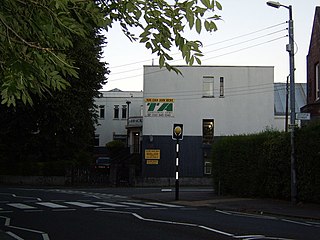
Walcheren Barracks is a drill hall located at Hotspur Street in Maryhill, Glasgow, Scotland. It is located adjacent to the site of the former Maryhill Barracks.
The Lowland Band of the Royal Regiment of Scotland is a Military band in the Territorial Army and one of three Military bands in the Royal Regiment of Scotland. The band is based at the East Claremont Street drill hall in Edinburgh and is administered by 52nd Lowland, 6th Battalion, The Royal Regiment of Scotland. The other two bands in the Regiment are the regular Regimental Band of the Royal Regiment of Scotland, which is based at Dreghorn Barracks in Edinburgh and is administered by the Corps of Army Music, and the other is the territorial Highland Band of the Royal Regiment of Scotland, which is based at Queen's Barracks in Perth and administered by 51st Highland, 7th Battalion, The Royal Regiment of Scotland.

The Dalmeny Street drill hall in Edinburgh, was built as a military drill hall in 1901, and between 2003 and 2010 was redeveloped as community arts and education centre under the name TheOut of the Blue Drill Hall. The drill hall is protected as a category A listed building.

The 155th Brigade was an infantry brigade of the British Army that saw active service in both World War I and World War II. Assigned to the 52nd (Lowland) Division, the brigade saw active service in the Middle East and on the Western Front during the First World War. During the Second World War, now the 155th Infantry Brigade, it continued to serve with the 52nd Division in Operation Dynamo, and later in North-western Europe from late 1944 until May 1945.

The East Claremont Street drill hall is a military installation in Edinburgh.
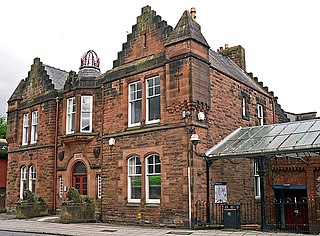
The Loreburn Hall is a military installation in Dumfries, Scotland.

The Hunter Street drill hall is a military installation in Kirkcaldy, Scotland.

The Ferry Road drill hall, known locally as Seaforth Barracks, is a military installation in Dingwall, Scotland.

The Cooper Park drill hall is a former military installation in Elgin, Scotland.
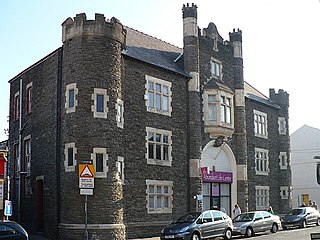
The Lower Dock Street Street drill hall is a former military installation in Newport, Wales.
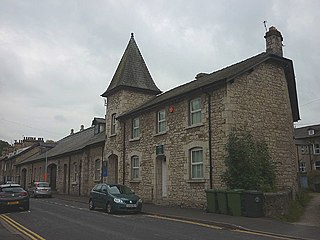
The Queen Katherine Street drill hall, sometimes known as the Aynam Road drill hall is former military installation located in Queen Katherine Street, off Aynam Road, in Kendal, Cumbria.

The Northgate Street drill hall was a military installation in Warwick.


